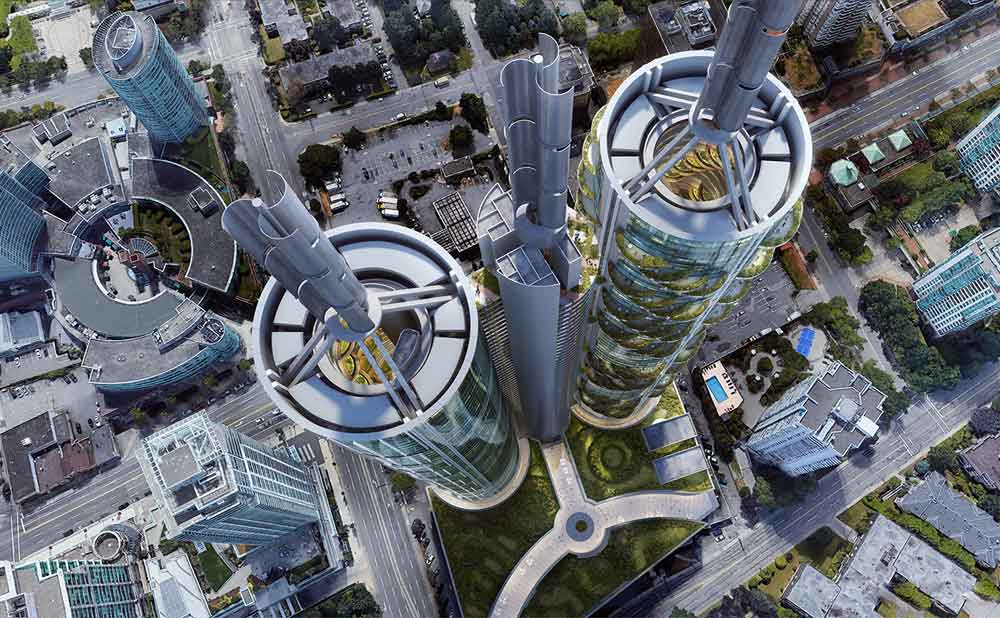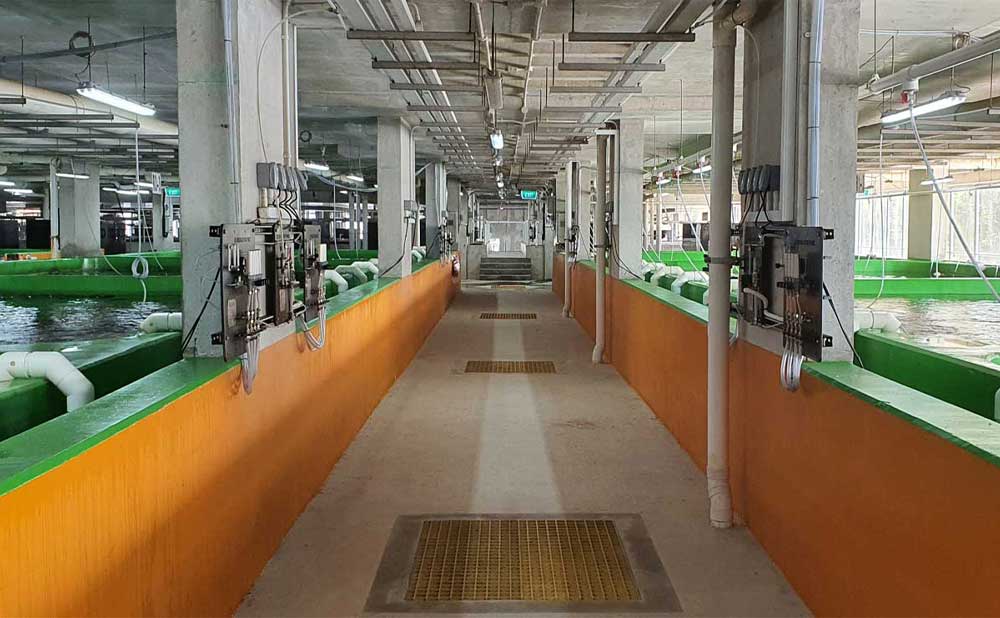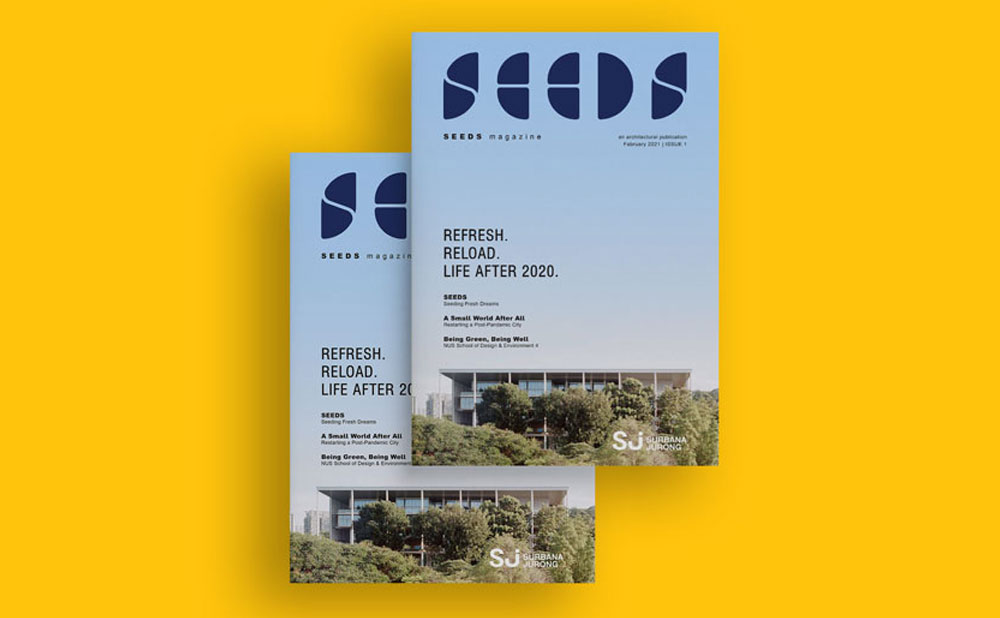WHY RESILIENT DESIGN MATTERS
ANTICIPATION, PREVENTION AND FORECASTING ARE KEY TO
SAFEGUARD AGAINST CLIMATE CHANGE
Oct, 2021
Urban Heat Island map of Singapore
Abstract: The new hybrid design approach called “Resilient Sustainability” seeks to reduce the negative effects of
climate change, while adapting to intense and unpredictable changes of various scales and maintaining ongoing
operations without the interruption of services. The writers believe that a methodology of anticipation, prevention and
forecasting offers a holistic and integrated design approach in fortifying projects’ ability to withstand climate stress,
secure investible assets and improve people’s lives.
Adapting To Disruption
Recent trends in sustainability have evolved from short-term focus on the localised impact of single buildings and
developments, to long-term life cycle analysis, decarbonisation, and climate positive outcomes. Resiliency has
become a more prominent and urgent issue, especially with the impact of the Covid-19 pandemic. On top of that,there has been
natural disasters in the form of volcanic eruptions in Indonesia, wildfires in Australia, seasonal monsoon floods in Vietnam, Thailand, Myanmar, and Bangladesh as well as
earthquakes and tsunamis in Thailand, Nepal, Japan, and Indonesia. These drive the
current focus on and demand for both resilient and sustainable design – or “Resilient Sustainability” – as design
that provides adaptability to threats and disruption, sensitivity to the environment and community, along with long-term
climate positive outcomes.
At present, the average global temperature on earth has increased by more than 1°C since 1880 according to ongoing research conducted by scientists at NASA’s Goddard Institute for Space Studies. Climate change scenarios project that the mean daily maximum temperature will increase by 1.2 to 1.9°C by 2050. At the same time, precipitation events will be shorter in duration but increase in intensity in the form of destructive storms and floods. Urban heat island and microclimate overheat are amongst common key stressors that need to be addressed through design strategies to provide comfortable and liveable communities. With severe drought and storm events expected to be a mainstay in Southeast Asia, intensive efforts are necessary to reduce potable water demand for outdoor irrigation in drought-ridden regions and seasons, while managing stormwater run-off from project sites in a more sustainable and resilient manner.
At present, the average global temperature on earth has increased by more than 1°C since 1880 according to ongoing research conducted by scientists at NASA’s Goddard Institute for Space Studies. Climate change scenarios project that the mean daily maximum temperature will increase by 1.2 to 1.9°C by 2050. At the same time, precipitation events will be shorter in duration but increase in intensity in the form of destructive storms and floods. Urban heat island and microclimate overheat are amongst common key stressors that need to be addressed through design strategies to provide comfortable and liveable communities. With severe drought and storm events expected to be a mainstay in Southeast Asia, intensive efforts are necessary to reduce potable water demand for outdoor irrigation in drought-ridden regions and seasons, while managing stormwater run-off from project sites in a more sustainable and resilient manner.
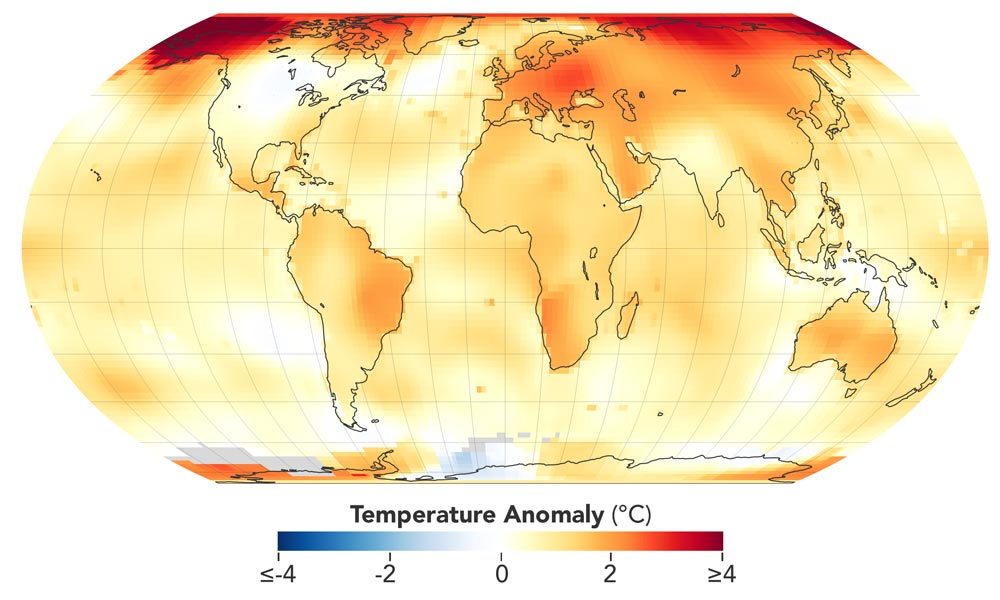
The average global temperature on earth has risen by over 1°C since 1880
NASA/Josh Stevens
NASA/Josh Stevens
Resiliency Is An Imperative
Since the initial introduction of sustainable development concept in the “Report of the World Commission of
Environment and Development: Our Common Future” which is also known as the Brundtland Report in 1987,
sustainability has always been a part of the international discussion on various global initiatives including the United
Nations’ Sustainability Development Goals. Nowadays, the concept of resilience has slowly emerged, not just as
another design trend, but rather as a necessity given the rise of climate change intensity around the world. Together,
the concept of resilience and sustainability forms a new hybrid holistic system design approach therefore called
“Resilient Sustainability.”
A truly resilient sustainable design focuses on the ability of
strategies to reduce the negative impacts on the environment,
while adapting to unpredictable changing conditions and
maintaining ongoing operations without the interruption of services.
A truly resilient sustainable design focuses on the ability of strategies to reduce the negative impacts on the environment; while adapting to unpredictable changing conditions and maintaining ongoing operations without the interruption of services;
Such unpredictable changes and disruptions can occur at various scales, from small local events to large regional
climatic shifts. More recently, with the Intergovernmental Panel on Climate Change (IPCC) addressing widespread,
rapid and intensifying impacts of climate change, the call for resilient sustainable design strategies will become the
first line of defence against adverse natural events with unpredictable outcomes.
Key Principles of
Resilient Design
The Resilient Design Institute, a non-profit organisation
dedicated to advancing resilient design in buildings and
communities, has established 10 key resilient design
principles.
These concepts focus on the scalability of approaches; systems that provide for basic human needs; enhanced diversity and redundant systems; passive design focus; design for flexibility, durability, circular economy, natural resource promotions, social equity, and community as well as a dynamic future. These key resilient design principles encompass a holistic approach to ensure that there will be no interruption of services during an adverse event. These key principles can be simply translated to common design strategies for project teams to utilise within our built environment by Anticipating, Preventing, and Forecasting.
These concepts focus on the scalability of approaches; systems that provide for basic human needs; enhanced diversity and redundant systems; passive design focus; design for flexibility, durability, circular economy, natural resource promotions, social equity, and community as well as a dynamic future. These key resilient design principles encompass a holistic approach to ensure that there will be no interruption of services during an adverse event. These key principles can be simply translated to common design strategies for project teams to utilise within our built environment by Anticipating, Preventing, and Forecasting.
Anticipating
Resilient sustainability design strategies should not be
considered as add-on features. Instead, they should be
considered as a pillar of the overall concept from an initial
stage of a project. In a way, resilient design should be the
backbone of a holistic, resilient, and sustainable design.
During the initial design stage Atelier Ten would lead a
Resilient Design Workshop with the team to brainstorm
design and operation strategies that anticipate and
effectively respond to possible scenarios.
Unexpected and projected climate events should be discussed during the workshop. The common anticipated scenarios in Southeast Asia region include urban heat island effects and extreme heat, drought, seawater rising, flood, waste overflow, energy shortage, food insecurity, air pollution and pandemic threats.
Unexpected and projected climate events should be discussed during the workshop. The common anticipated scenarios in Southeast Asia region include urban heat island effects and extreme heat, drought, seawater rising, flood, waste overflow, energy shortage, food insecurity, air pollution and pandemic threats.
Key Principles of
Resilient Design
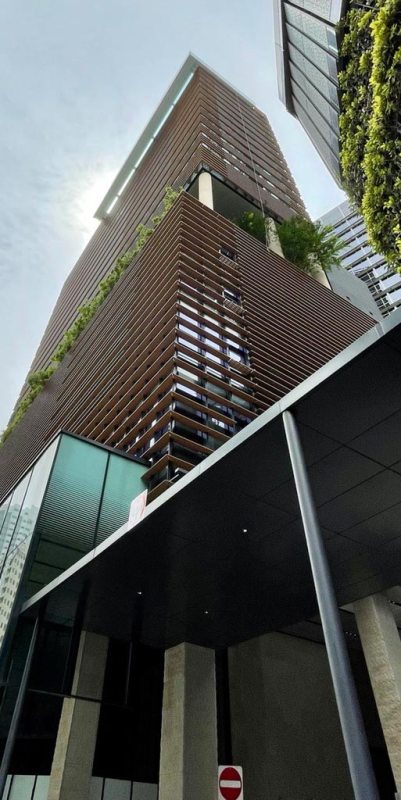
Bideford Hill has an extensive external shading system as a resilient
feature for insulating the indoor environment from extreme heat
Preventing
Starting from the establishment stage, listing all anticipated climatic scenarios will help to visualise possible threats to projects’ ongoing operation in the long run. For instance, urban heat island and extreme heat stress have become a norm in all major urban areas in Southeast Asia. It is a challenge to avoid the accumulation of heat within built structures and hardscape surfaces in all city areas during the day that gets released at night. To assist with lowering the impact of urban heat island effects, a high-performance building envelope is specified, along with the addition of vertical greenery and dense green areas.
Materials with high solar reflectance index (SRI) will also contribute to reduce the heat accumulation in built structures and hardscape surfaces during the daytime, which in turn, reduces the overall cooling load demands, therefore reducing the overall energy consumption of the development. At Bideford Hill, the high-performance envelope with extensive external shading system serves as a resilient feature for insulating and protecting the indoor environment from the incoming extreme heat during the day, while providing useful daylight exposure for occupants.
Another common resilient sustainable feature is green and blue infrastructure within a development to fight against both drought and flood events. At Gardens by the Bay, Atelier Ten worked with Grants Associates to design gardens and water features which assist in slowing down and channelling stormwater run-off to attenuation tanks. This captured stormwater is reused for irrigation and any excess water is then naturally treated at reedbeds before leaving the site to flow into Marina Reservoir. The green infrastructure also mitigates the urban heat island effect while serving as a sponge that absorbs stormwater run-off, preventing the event of flooding. Stormwater reuse also reduces the development’s dependency on Singapore’s limited water resources upstream. By pushing the potential on water infrastructure, resilient design in a building, and therefore in a city, will further cushion both the impacts of existential sea level rise and water resource scarcity.
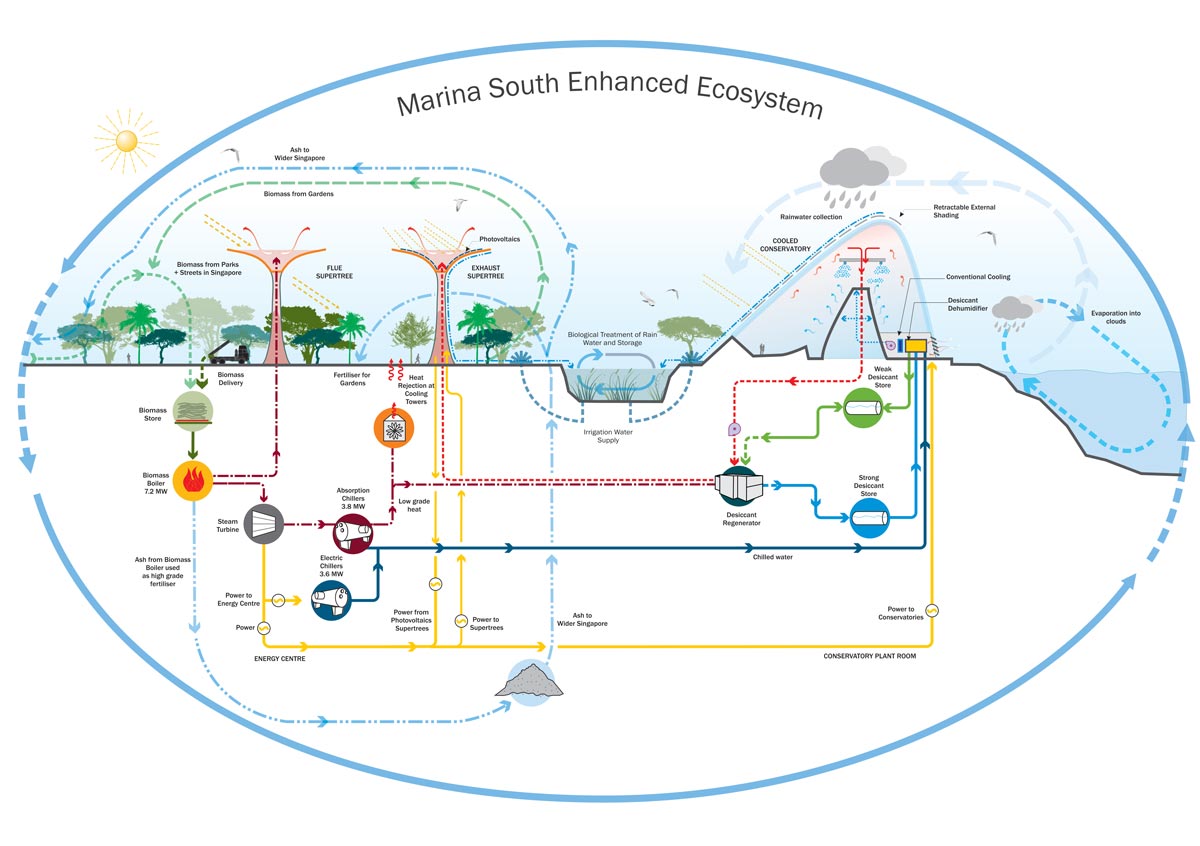
The thinking behind the design of Gardens by the Bay in Singapore
Lastly, transnational air pollution events such as haze in Singapore or “PM2.5 phenomenon” in the wider region
have regularly become a seasonal issue for the Southeast Asia region, spanning from December through January.
Even though there is no immediate solution to prevent these unfortunate phenomena, design teams can implement preventative design measures. This includes a high-performance building envelope paired with good air filtration systems within mechanical ventilation design. For example, the incorporation of MERV 14 filter is a mandatory feature for Singapore BCA Green Mark Certification. This will assist to ensure good indoor environmental quality during air pollution events and support the overall health and wellness of building occupants on an ongoing basis.
Even though there is no immediate solution to prevent these unfortunate phenomena, design teams can implement preventative design measures. This includes a high-performance building envelope paired with good air filtration systems within mechanical ventilation design. For example, the incorporation of MERV 14 filter is a mandatory feature for Singapore BCA Green Mark Certification. This will assist to ensure good indoor environmental quality during air pollution events and support the overall health and wellness of building occupants on an ongoing basis.
Forecasting
Beyond preventative measures, utilising microclimatic modelling
tools in the early planning and design process can be used as a good forecasting of anticipated scenarios.
Forecasting allows design teams to specify preventative design measures early in order to optimise building layout and
orientation; to understand the strength of street wind corridors; and to identify hotspots for outdoor thermal comfort
specifically in Southeast Asia region. Furthermore, there are advanced tools to predict climate change for extreme
temperatures and potential sea level rise. These tools enable design teams to be aware of anticipated outcomes
and make space to correct and adjust resilient sustainable design strategies for projects as early as the design
development stage.
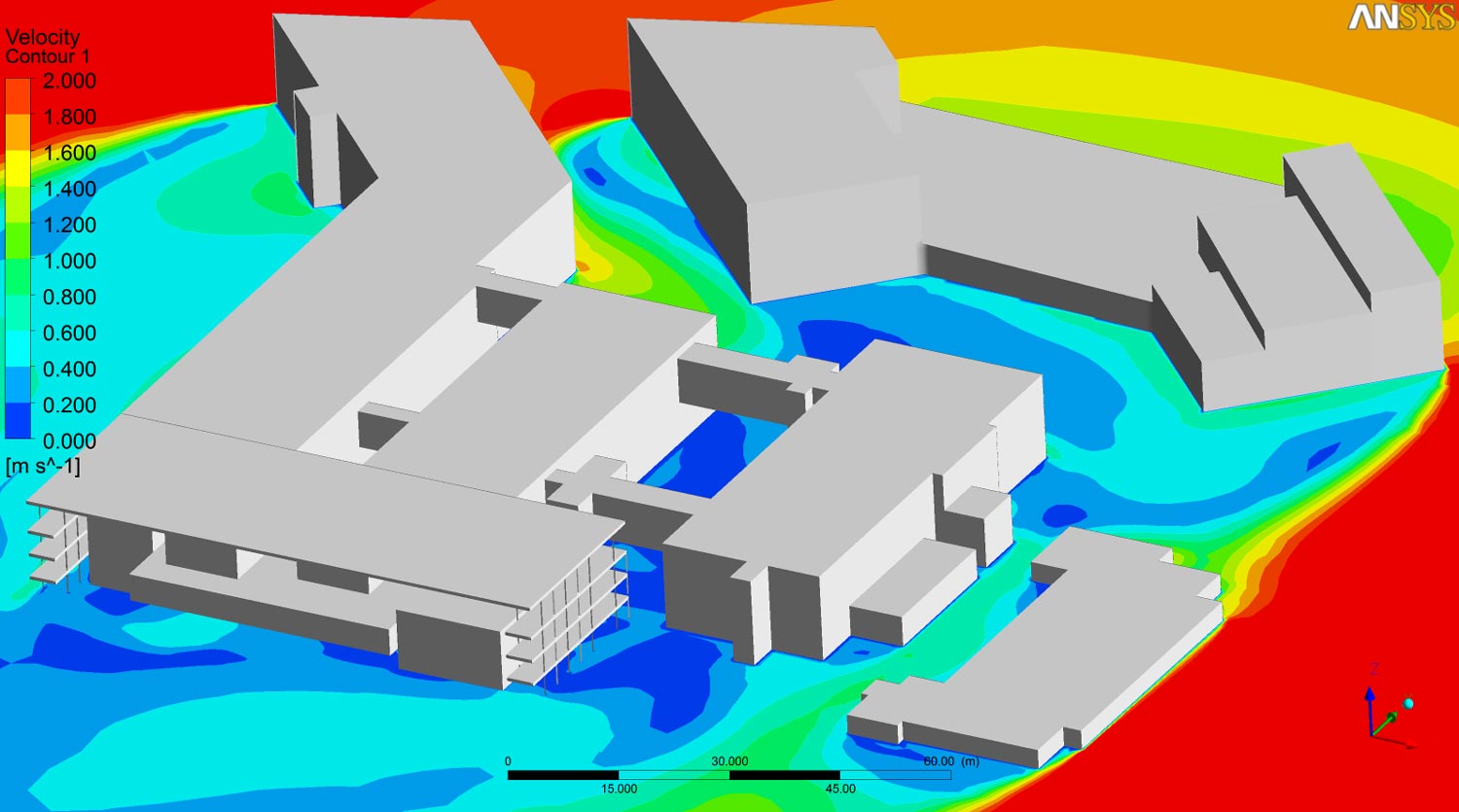
Design teams can use wind and daylight analyses to predict anticipated scenarios
When it comes to implementing a truly resilient sustainable design, the commonly heard phrase “think globally, act
locally,” can be simply morphed into a more proactive phrase by altering the term “think” to “act”. In turn, the phrase
becomes “act globally, act locally”, which captures the holistic approach of true resilient sustainable design strategies to cover local context and global phenomena. In this case, this movement can be applied at all scales from local
to regional to global, in order to introduce a holistic integrated ecosystem that will withstand all anticipated and
unforeseen scenarios.
Educating the Public
Finally, climate resilient sustainable design will establish and strengthen projects’ capability in dealing with possible
climate change impacts on the project site and its surrounding areas. This will also encompass engaging the public
through educational campaigns with digital platforms. A public that is well-informed about possible natural and
man-made disasters such as urban heat island, flooding and harmful outdoor air quality, will be more receptive to
the implementation of resilient sustainable design strategies developed with an understanding of
climate-related challenges.
Such a mindset shift is vital for success, as resilient sustainability design will protect and enhance people’s lives, secure development gains, foster investible environments and drive positive change.
Such a mindset shift is vital for success, as resilient sustainability design will protect and enhance people’s lives, secure development gains, foster investible environments and drive positive change.
The SEEDS Journal, started by the architectural teams across the Surbana Jurong Group in Feb 2021, is a platform
for sharing their perspectives on all things architectural. SEEDS epitomises the desire of the Surbana Jurong Group
to Enrich, Engage, Discover and Share ideas among the Group’s architects in 40 countries, covering North Asia, ASEAN,
Middle East, Australia and New Zealand, the Pacific region, the United States and Canada.
Articles at a glance







